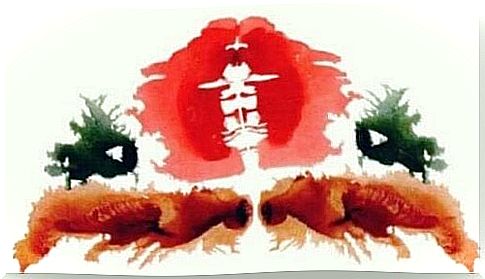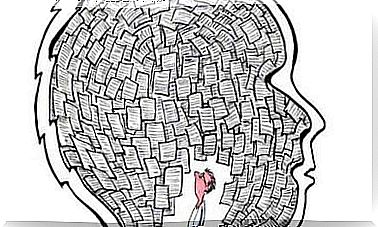Benefits Of The Zulliger Test When Recruiting For A Job

The Z-test, or Zulliger test, is a projective test that was developed in 1942. At first glance, it is easy to confuse with the Rorschach test, which many more people know. However, it does not follow the same protocol and there are some advantages to the Zulliger test compared to its more famous cousin. It is much easier to administer and its interpretation parameters are faster.
The goal of the test is the same as that of any other projective test: to describe personality traits using a psychoanalytic method. Therefore, it is easy to understand why the test has lots of critics today, but that does not make it any less interesting. Among all the advantages of the Zulliger test is its usefulness in selecting candidates during recruitment processes.
A positive aspect of this test compared to other projective tests such as the Draw-a-Person-in-the-Rain test, the Baum test and the Murray test, is that it collects data that backs up its validity. Statistical studies of the test give it a robustness that makes it useful for personnel departments.

Benefits of the Zulliger test: what it evaluates and how employers use it
The fact that the Zulliger test is reminiscent of the Rorschach test is no coincidence. Hans Zulliger, the Swiss psychiatrist who developed the test, was one of Hermann Rorschach’s students. If there is one thing that Zulliger is known for, it is his influential work as a child psychoanalyst as well as his promotion of psychoanalytic pedagogy.
Before the peak of his career, he spent several years with Rorschach. His aim was to gain a deeper understanding of human personality with the help of the classic ink test. Another external factor helped shape his professional career: World War II. When the war broke out , the Swiss army was looking for tests to help with recruitment and Hans Zulliger was the man for the job.
Zulliger administered intelligence tests, personality tests and even Rorschach tests. However, he realized that the ink test was far too complicated to be used effectively. What the army needed at this time was efficiency, speed and the ability to administer tests to an average of 30 people at a time.
It did not take him long to develop a new test. Let’s take a look at what his new test entails.
Advantages of the Zulliger test when it comes to evaluation
The Zulliger test is a projective test. What does it mean? This means that the instrument at hand provides many subjective answers. The answers come from stimuli that arouse the test takers’ imagination, as well as their sensitivity, desires, personality traits, etc.
- What distinguishes this test from other tests of the same kind is its validity and ease of use.
- Zulliger designed a test that made it possible to quickly determine if individuals had mental health problems or not. The test also helped identify whether the test taker had good skills for certain roles in the army.
- In addition, it could evaluate the individual’s mental processes: his fears, social adjustment, emotional world and self-control.
- Today, many human resources departments use the Zulliger test in their recruitment processes.
How does the test work?
The test can be taken individually or as a group. In both cases , the test taker is presented with three ink pumps. The person who administers the test explains that the images have no concrete meaning, but that they tend to evoke different things in each person. The test taker must explain what he sees in each ink color.
- The first ink image is black and white. It is the most compact and test takers usually interpret it as just a concept. It represents an individual’s deep thinking.
- The second is a more interesting image because it uses several bright colors and is more complex. This color image tends to evoke more sensations and emotions in the test taker. The way the individual interprets this image usually has to do with skills, order, self-control, etc.
- The last ink image is gray, black and red. It suggests dynamism and movement and relates to social relationships.
Once the test taker has written down the thoughts, feelings, and images that each ink image triggers, it’s time to talk. Each individual explains to the therapist or psychologist what he or she sees in each detail in the color images.
How to evaluate the test?
Only skilled professionals who are well versed in this test are qualified to interpret it. It would be pointless and useless for a layman to try this. An understanding of projective tests and experience of the Zulliger test is a requirement.
- The test has no correct or incorrect answers.
- The person who administers the test analyzes the individuals’ reactions to the ink pumps and how they express themselves. The higher the level of detail and the more emotions they express, the higher the score. It also evaluates originality, psychological coherence, self-perception, ways of thinking, etc.
It is important to know that although this is a projective test with clearly subjective answers, it gives a general idea of the individual’s inner life and personality.
Today, many companies use the Zulliger test during their hiring processes along with other tests. Although it was developed more than eight decades ago, it is still an interesting and useful tool.








